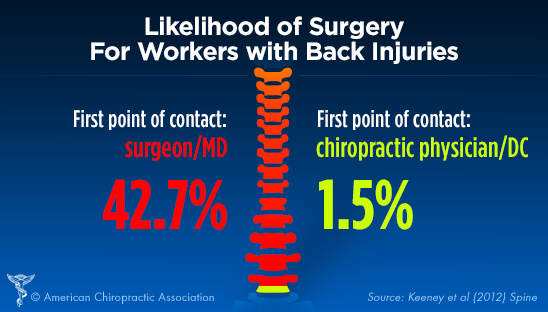Comprehend The Covert Factors For Your Neck And Back Pain And Take Aggressive Steps Towards Far Better Wellness
Comprehend The Covert Factors For Your Neck And Back Pain And Take Aggressive Steps Towards Far Better Wellness
Blog Article
Written By-McCabe Knudsen
If you're experiencing neck and back pain, your body might be trying to inform you something more than simply pain. The method your back really feels can supply useful hints about your overall well-being. Understanding the details sort of pain you're really feeling and any coming with symptoms is vital to unraveling the secret behind your discomfort. Allow's discover the common conditions and signs and symptoms connected with various kinds of back pain to clarify what your body may be signaling.
Kinds Of Neck And Back Pain
When it involves back pain, there are numerous types that you may experience. One typical type is muscular tissue discomfort, frequently caused by overuse, pressure, or injury to the muscular tissues and tendons supporting the back. This sort of pain can range from mild pain to extreme and devastating pain.
An additional kind is nerve pain, which can result from conditions like herniated discs or sciatic nerve pain. Nerve pain commonly presents as a sharp, shooting feeling that radiates down the leg.
Joint pain in the back can stem from issues like arthritis or sacroiliac joint dysfunction. please click the following page of discomfort is usually really felt in the lower back and can be worsened by certain activities.
Furthermore, neck and back pain can be associated with structural issues such as spinal constriction or vertebral fractures. Understanding the type of back pain you're experiencing is essential in determining the suitable treatment and monitoring techniques.
Common Symptoms to Look For
Relocating past the various types of back pain, it is essential to acknowledge the usual signs that can indicate underlying problems.
Relentless neck and back pain that gets worse with movement or at night might show a more major problem. Tingling or tingling in the legs or feet, specifically when accompanied by weak point, could point to a nerve-related problem. If acupuncture webster ny experience abrupt fat burning together with pain in the back, maybe a sign of a much more systemic condition.
Focus on any type of adjustments in bladder or bowel function, as this could be connected to spinal cord compression. High temperature, chills, or evening sweats in conjunction with pain in the back might indicate an infection. Keep an eye out for discomfort that emits down one or both legs, potentially a sign of sciatic nerve pain.
Wellness Issues Linked to Neck And Back Pain
If you suffer from back pain, it's critical to understand the prospective wellness conditions linked to this discomfort. Back pain can be a sign of different underlying problems, consisting of muscle mass stress, herniated discs, osteoarthritis, spine stenosis, and also conditions like kidney stones or infections.
Muscle pressures prevail and usually arise from lifting hefty objects or abrupt activities.
Herniated discs occur when the soft tissue between vertebrae protrudes, creating nerve irritation.
Osteoarthritis, a degenerative joint condition, can lead to back pain as cartilage wears down.
Spine stenosis, the narrowing of the spinal canal, can tax nerves.
Kidney stones might create extreme back pain if they move right into the urinary tract.
Infections like back osteomyelitis can also materialize as pain in the back. Understanding these potential health conditions can aid you seek suitable medical care and monitoring for your pain in the back.
Conclusion
So, following time your back harms, take notice of the type of discomfort and accompanying signs and symptoms. Maybe a signal from your body about underlying health and wellness conditions like muscular tissue stress, nerve problems, joint troubles, and even architectural concerns. By recognizing these signs, you can take positive actions to deal with the root cause of your back pain and enhance your general wellness and well-being.
